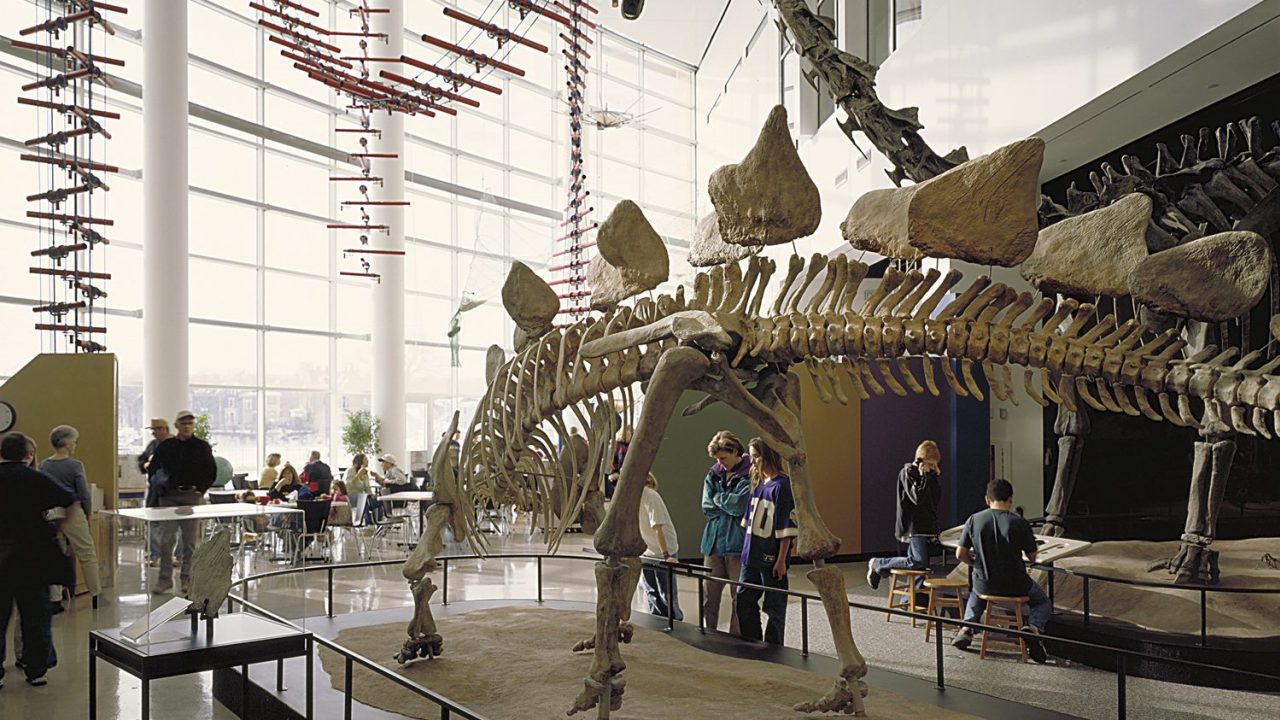Blog Posts | October 28, 2019
Share ThisThis is a cross-post from the The American Alliance of Museums. You can find the original blog post here.
By Charlie Iverson, Registrar, Science Museum of Minnesota
The timing was right for Science Museum of Minnesota (SMM) to participate in the Collections Stewardship Museum Assessment Program (MAP) program in 2018. Since our last MAP, in 1985, we had experienced many changes. Most recently, our new president Alison Brown had begun her tenure in 2016, with a renewed focus on SMM’s science, research, and collections that led to the creation of our Center of Research and Collections (CRC). Participating in MAP also aligned with the museum’s initiative to complete AAM reaccreditation in 2020.
To be accepted into the MAP Collections Stewardship program, we needed to allocate time to complete a systematic examination of our collections stewardship practices. We valued this opportunity for a focused evaluation of our overarching practices, a project that is difficult to fit in when occupied with day-to-day operations. The MAP self-assessment workbook was time-consuming but extremely beneficial. In addition to instigating fruitful conversations and self-reflection, the statistics and narratives we developed in the process have been useful in multiple ways. For instance, many of our responses from the workbook have been directly applicable to our reaccreditation application and to various grant proposals.
Due to the size and variety of our collection, the MAP program officers recommended we request two peer reviewers. We were extremely fortunate to have John E. Simmons, principal of Museologica, and Elise LeCompte, Registrar and Coordinator of Museum Health and Safety at the Florida Museum of Natural History, for our reviewers. They proactively addressed the collections-related concerns we identified in our workbook and our objectives for the site visit they conducted. The visit was a very positive and enlightening experience. The reviewers were complimentary but also prepared to discuss weaknesses, and there was an overall feeling of collaboration and encouragement.
We continually refer to the MAP final assessment report generated by our peer reviewers. The report describes significant issues that will take time to address, which we are working toward with a newly developed Collections Work Plan. The plan prioritizes our various needs and makes proposals for improvement. Although it is still a work in progress, it has already helped us articulate our needs and identify discrete projects for possible funding, volunteer responsibilities, and general staff assignments.
With the recommendations in hand, and reaccreditation on the horizon, we began implementing numerous smaller changes from the MAP report immediately. One of our goals for the MAP was to get advice on increasing awareness of our collections, both internally and externally. To achieve this, we had been writing weekly internal articles about research and collections, which the reviewers supported and recommended ways to disseminate the content more widely. We also reinvigorated our Accession Committee and expanded the reporting relationship between CRC, senior management, and the Board of Trustees. We are also in the final planning stages of an exhibit that will feature SMM’s research and collections.
The report brought attention to our education collection, which had been inconsistently managed throughout its history. We decided to catalog and increase accessibility to this valuable resource, an undertaking which brought together volunteers, floor staff, our teacher lending library, and education and summer camp staff to brainstorm. It was the first time we had convened such a diverse range of staff for this kind of purpose.
Following the reviewers’ recommendations to digitize our collection and increase our web presence, we applied for and received grants to complete two large digitization projects that aim to increase access to our collections. Our biology collections will be online for the first time, the visibility of our Minnesota anthropology collection will increase, and we will be reconstructing our collection’s online interface.

We were pleasantly surprised that the reviewers also identified our needs directly related to reaccreditation, including specific changes to our core documents. This gave us momentum and confidence to build on as we work on our policies and procedures for the upcoming reaccreditation process.
The MAP process helped shift our collections stewardship approach from reactive to proactive, with a more deliberate direction and improved articulation of our long-term goals. The outside evaluation provided by the MAP report combined with our internal assessments have given us documentation to support the CRC’s growth and development.
The MAP program provides an abundance of support through web modules, sample timelines, and direct communication with MAP staff. We are grateful for our peer reviewers, AAM, and IMLS for making our MAP experience so beneficial and productive.
MAP is supported through a cooperative agreement between the Institute of Museum and Library Services and the American Alliance of Museums.
Learn more about MAP – Applications are now being accepting through Dec. 1, 2019!
Museum Assessment Program (MAP)
About the author:
Charlie Iverson is Registrar at the Science Museum of Minnesota, where he has worked for almost ten years. He earned his BA in Anthropology from Beloit College and MA in Museum Ethnography from University College London. Previously he has worked for the National Park Service, University of California Berkeley, and the Museum of the Red River.
About the museum:
The Science Museum of Minnesota is one of the state’s most popular museums, serving hundreds of thousands of people each year with its engaging exhibits, breathtaking giant screen films, unique special events, and extensive collection. The Museum holds over two million objects in its collection from Anthropology, Biology, and Paleontology and its research programs span the globe. For more information, visit www.smm.org.

